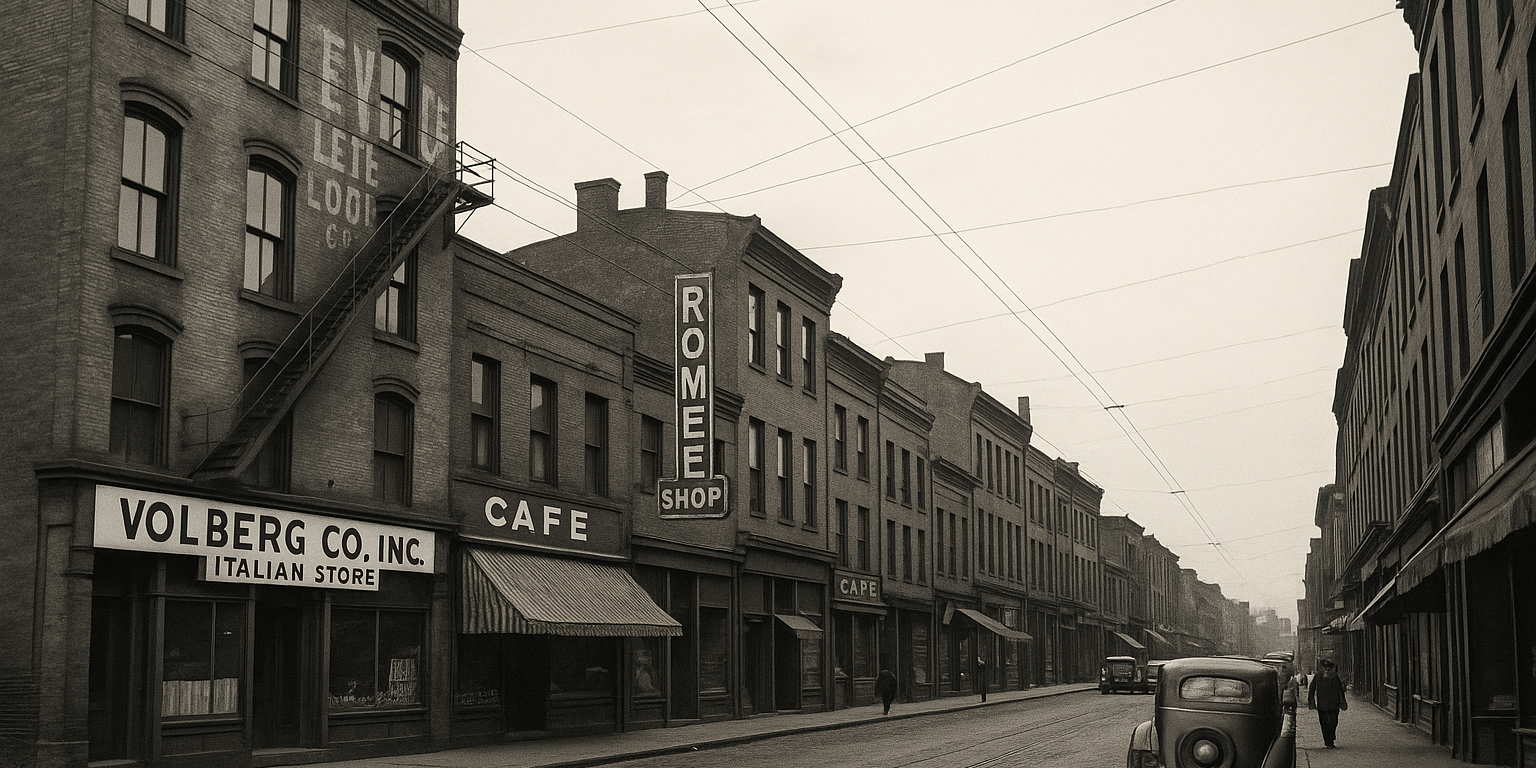Pittsburgh’s vibrant Strip District is beloved for its eclectic markets, trendy eateries, and bustling streets. However, beneath its colorful surface lies a fascinating, shadowy past marked by bootlegging, organized crime, and legendary mobsters. This intriguing underworld history dates back to Prohibition (1920–1933), a time when the federal ban on alcohol inadvertently fostered a thriving black market and widespread criminal activity.
Let’s take a journey back through time and explore some historic locations in the Strip District, where notorious gangsters once held court. These sites still stand today, offering visitors a tangible connection to Pittsburgh’s criminal legacy.
Setting the Stage: Prohibition-Era Pittsburgh
When Prohibition took effect in January 1920, alcohol consumption didn’t stop; instead, it went underground. Organized crime syndicates swiftly moved into the lucrative bootlegging business. Pittsburgh, strategically located near waterways and railroad lines, became a hotbed for illegal liquor trade, gambling rings, and speakeasies. Rival gangs frequently clashed over territories, and violence spilled into the streets.
Volcano Café: The Infamous Volpe Brothers Massacremo
On July 29, 1932, one of the city’s most infamous mob-related incidents occurred at the Volcano Café, located near the corner of 17th and Smallman Streets. Brothers James, Arthur, and John Volpe, known for their aggressive expansion into gambling and bootlegging, were brutally murdered in broad daylight.
The hit was orchestrated by John Bazzano, a local mob boss threatened by the Volpe brothers’ increasing influence. The brazen attack shocked the community, prompting a crackdown by law enforcement. Although the original building no longer exists, visitors to the area can still sense the echoes of that violent day (read more about John Bazzano’s ruthless reign).
Wholey’s Building: A Cold Storage Hideaway
Now known as Wholey’s Market at 1711 Penn Avenue, this large structure built in 1928 originally served as the Federal Cold Storage Building. During Prohibition, its refrigerated rooms were rumored to store more than just seafood. Legend has it the mob utilized these cold rooms to discreetly store and distribute bootlegged liquor, hidden among legitimate shipments.
Though today shoppers are busy selecting fresh seafood, few realize they’re standing on ground once essential to Pittsburgh’s mob activities.
Rome Coffee Shop: Espresso and Espionage
Located on Wylie Avenue, the Rome Coffee Shop was a major hub for mob business. Beyond serving strong espresso, the café secretly hosted meetings of powerful mob leaders who strategized over illegal alcohol distribution, gambling networks, and racketeering schemes. Hidden rooms behind the café provided safe spaces for deals that shaped Pittsburgh’s criminal landscape.
Demolished in 1956, the Rome Coffee Shop remains a vivid part of Pittsburgh lore, symbolizing the clandestine nature of the city’s organized crime scene.
Senator John Heinz History Center: Documenting Mob History
At 1212 Smallman Street, the Heinz History Center offers extensive displays chronicling Pittsburgh’s organized crime era. Visitors can explore authentic artifacts, detailed photographs, and engaging narratives that vividly depict the city’s mob past, making it an essential stop for history enthusiasts seeking deeper insights.
The Showboat Club: Glamour and Crime
Once a prominent nightclub located on Liberty Avenue, the Showboat Club was operated by Geno Chiarelli, a known figure in the local underworld. The club attracted Pittsburgh’s elite alongside notorious gangsters, offering extravagant entertainment paired with alleged illegal gambling operations. Its sudden closure in 1972, amid whispers of an FBI investigation, added another chapter to its mystique.
Strip District’s Secret Tunnels and Basements
Less known to the public are the underground networks beneath the Strip District. Tunnels and basements once provided secret routes for smuggling alcohol and other contraband. These hidden passageways facilitated discreet movement of bootleggers, enhancing their ability to evade law enforcement.
Walking Through Mob History: Tours Today
The modern Strip District embraces its storied past through organized walking tours. Guides recount vivid stories of bootlegging, gang wars, and notable mob hits. Participants traverse historic locations, enhancing their understanding of Pittsburgh’s layered past.
Fascinating Lesser-Known Mob Facts
- After masterminding the Volpe massacre, John Bazzano himself met a grisly end in Brooklyn in 1932, a direct consequence of mob retaliation.
- Pittsburgh’s Strip District once housed hidden gambling dens within legitimate businesses, cleverly disguising their true nature from authorities.
- Mob activity wasn’t limited to men; influential women also played pivotal roles behind the scenes, managing speakeasies and maintaining essential criminal networks.
Conclusion: Reflections on a Dark Past
Today, the Strip District stands as a vibrant symbol of Pittsburgh’s cultural and economic resurgence. However, its colorful past remains embedded in every brick and alleyway. By exploring these iconic mobster hideouts, visitors gain a richer appreciation for the complex, sometimes dark forces that shaped Pittsburgh into the thriving city it is today.
More Secret Tunnels, Mafia Haunts, and Underworld Lore
The Strip District’s back-alley hideouts are just the beginning. Dive into our full Pittsburgh Mafia & Crime History collection to meet the mobsters who used these spaces—and the empires they built from the shadows.
From notorious dons like John Bazzano to high-stakes heists and the rise of the LaRocca family, this hub maps the full extent of Pittsburgh’s criminal underworld.
Explore the Full Crime History →








